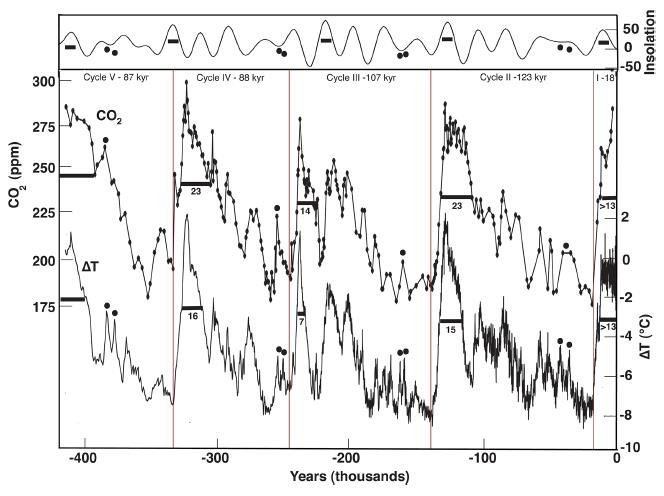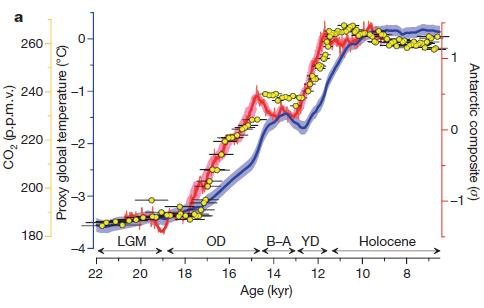Challenges to the CO2 Global Warming Hypothesis: (5) Peer Review Abused to Axe Skeptical Paper
/A climate research paper featured in a previous post of mine has recently been removed by the publisher, following a post-publication review by seven new reviewers who all recommended rejection of the paper. This drastic action represents an abuse of the peer review process in my opinion, as the reviews are based on dubious science.
The paper in question was a challenge to the CO2 global warming hypothesis by French geologist Pascal Richet. From analysis of an Antarctic ice core, Richet postulates that greenhouse gases such as CO2 had only a minor effect on the earth’s climate over the past 423,000 years, and that any assumed forcing of climate by CO2 is incompatible with ice-core data.
Past atmospheric CO2 levels and surface temperatures are calculated from ice cores by measuring the air composition and the oxygen 18O to 16O isotopic ratio, respectively, in air bubbles trapped by the ice. Data from the core, drilled at the Russian Vostok station in East Antarctica, is depicted in the figure below. The CO2 level is represented by the upper graphs (below the insolation data) that show the substantial drop in CO2 during an ice age; the associated drop in temperature ΔT is represented by the lower graphs.
It’s well known that the CO2 level during the ice ages closely mimicked changes in temperature, but the CO2 concentration lagged behind. What Richet observed is that the temperature peaks in the Vostok record are much narrower than the corresponding CO2 peaks. From this observation, he argued that CO2 can’t drive temperature since an effect can’t last for a shorter period than its cause.
The seven negative reviews focused on two main criticisms. The first is that Richet supposedly fails to understand that CO2 can act both as a temperature driver, when CO2 leads, and as an amplifying feedback, when CO2 lags.
At the end of ice ages, it’s thought that a subtle change in the earth’s orbit around the sun initiated a sudden upward turn of the temperature. This slight warming was then amplified by feedbacks, including CO2 feedback triggered by a surge in atmospheric CO2 as it escaped from the oceans; CO2 is less soluble in warmer water. A similar but opposite chain of events is believed to have enhanced global cooling as the temperature fell at the beginning of an ice age. In both cases – deglaciation and glaciation – CO2 as a feedback lagged temperature.
However, several of Richet’s reviewers base their criticism on a 2012 paper, by paleoclimatologist Jeremy Shakun and coauthors, which proposes the somewhat preposterous notion that CO2 lagged temperature during the most recent glaciation, all through the subsequent ice age, and during 0.3 degrees Celsius (0.5 degrees Fahrenheit) of the initial warming as the ice age ended – but then switched roles from feedback to driver and led temperature during the remaining deglaciation.
Shakun’s proposal is illustrated in the left graph below, in which the blue curve shows the mean global temperature during deglaciation, the red curve represents the temperature in Antarctica and the yellow dots are the atmospheric CO2 concentration. The CO2 levels and Antarctic temperatures are derived from an ice core, as in Richet’s paper but using the so-called Dome C core, while global temperatures are calculated from proxy data obtained from ocean and lake sediments.
The apparent switch of CO2 from feedback to driver is clearly visible in the figure above about 17,500 years ago, when the temperature escalated sharply. Although the authors attempt to explain the sudden change as resulting from variability of the AMOC (Atlantic Meridional Overturning Circulation), their argument is only hand-waving at best and does nothing to bolster their postulated dual role for CO2.
In any case, a detailed, independent analysis of the same proxy data has found there is so much data scatter that whether CO2 leads or lags the warming can’t even be established. This analysis is shown in the right graph above, where the green dots represent the temperature data and the black circles are the CO2 level.
All this invalidates the reviewers’ first main criticism of Richet’s paper. The second criticism is that Richet dismisses computer climate models as an unreliable tool for studying the effect of CO2 on climate, past or present. But, as frequently pointed out in these pages, climate models indeed have many weaknesses. These include the omission of many types of natural variability, exaggeration of predicted temperatures and the inability to reproduce the past climate accurately. Repudiation of climate models is therefore no reason to reject a paper.
Some of the reviewers’ lesser criticisms of Richet’s paper are justified, such as his analysis of only one Antarctic ice core when several are available, and his inappropriate philosophical and political comments in a scientific paper. But outright rejection of the paper smacks of bias against climate change skeptics and is an abuse of the time-honored tradition of peer review.
Next: The Crucial Role of Water Feedbacks in Global Warming







